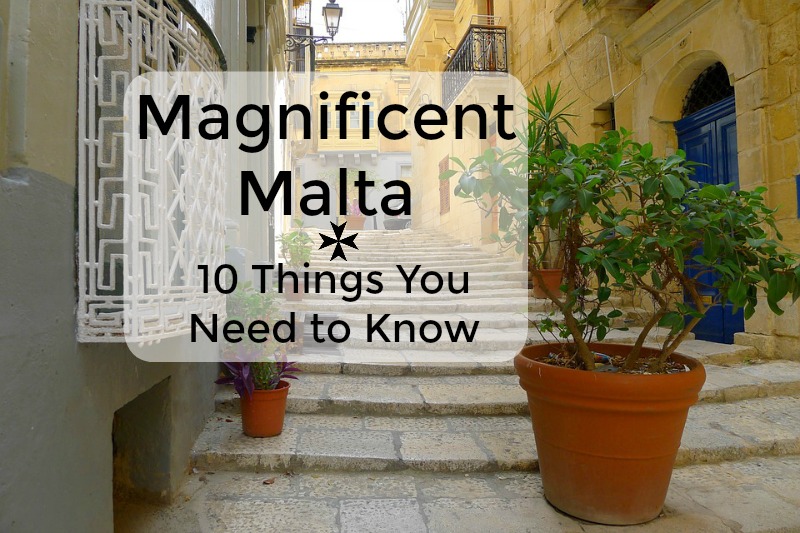
Maybe you first started thinking about visiting Malta when the tiny Mediterranean country made a cameo appearance on The Crown, or from the Buzzfeed slideshow that went viral (NSFW language warning!) Maybe your grandpa sailed past or flew over it during World War II.
Maybe, like me, you married into a fiercely patriotic Maltese family. Or maybe, like many Canadians, you’ve never heard of Malta at all! No matter if you’ve been dreaming of visiting Malta for years, or just beginning to fantasise, here are the things you need to know:
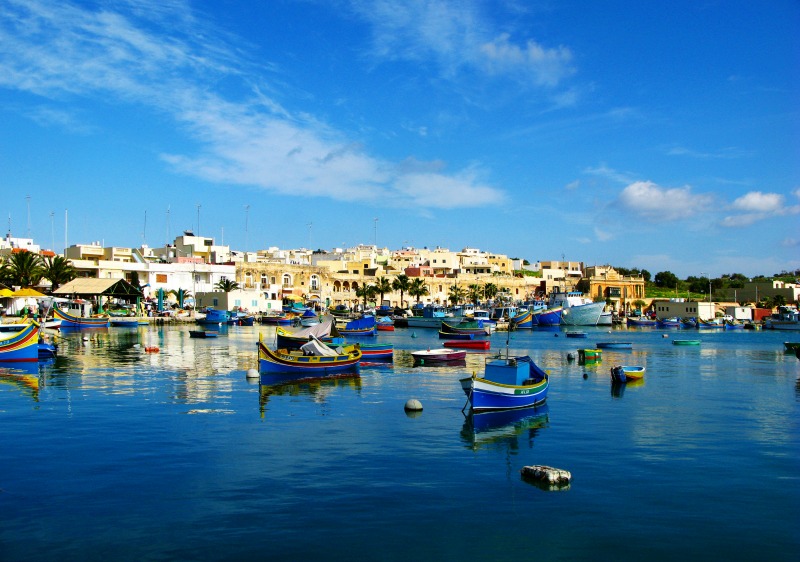
Fishing boats called luzzu line the shore along the seaside village of Marsaxlokk © viewingmalta.com credit: Peter Vanicsek
It’s small:
The three islands of Malta are only 316 km square put together, with a population of 400 000. That means wherever you decide to make your home base; you are going to be able to get around quickly. The largest island is Malta, followed by the smaller, more rural island of Gozo, and the smallest one: Comino, which is mostly uninhabited but is a beautiful spot to ferry over and spend the day!
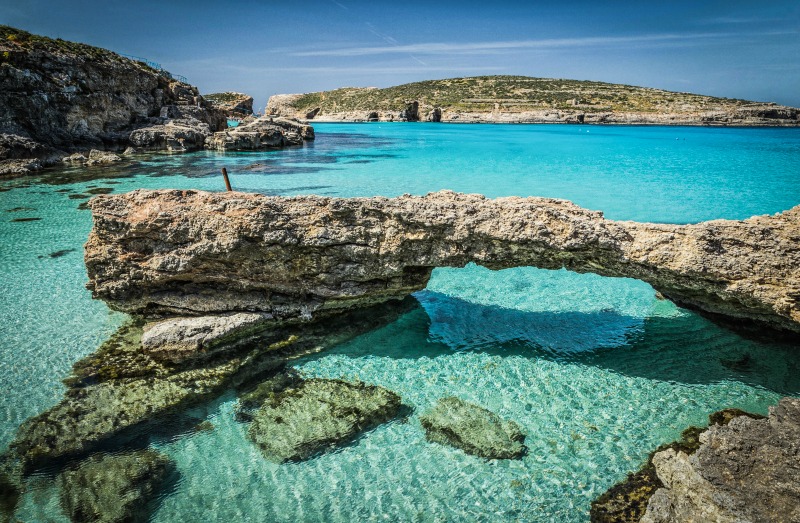
The aptly named Blue Lagoon shows off some of the beautiful Mediterranean blue. ©viewingmalta.com credit: Gregory Iron
There is blue you’ve never seen…
Oh, that Mediterranean ocean. To say it is “crystal clear” or some other cliche just won’t cut it. It needs a new word… the water is un-blue-lievable! You can find rocky coves just about anywhere along the shore for a little seaside adventure. For sandy beaches, check out favourites like Golden Bay, Paradise Bay, and Ghenja Bay. A visit to the Blue Grotto is high on the list of “must-dos.” Take a boat ride early; before 10 am when the sun is still low in the sky. The multiple blue colours glow in the deep water caverns in a display that feels a little surreal.
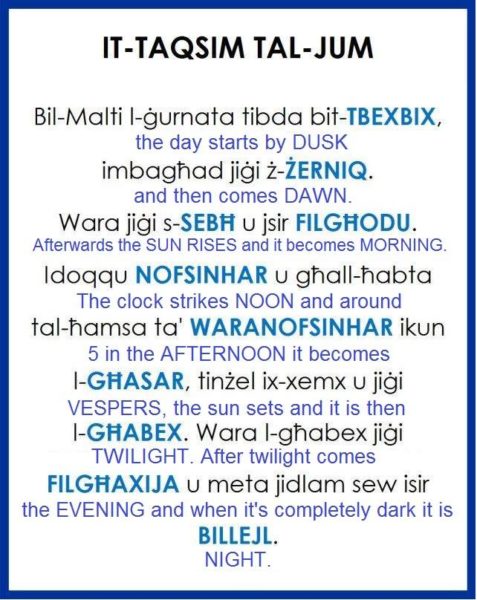
A handy little mnemonic to help you remember the parts of the day, haha. Many thanks to Nicole Lombardi and Gino Lombardi for the translation.
You’re lucky it’s bilingual:
There are two official languages: English and Malti. Malti is a language descended from a branch of Arabic with Phoenician roots and influenced by Romance languages (mainly Italian.) Lots of signs are in English and Maltese, and most people speak English so getting around is easy. Our alphabets are similar so you’ll be able to read it, but man, I have to tell you, you haven’t seen anything like it before. Silent Q? What?
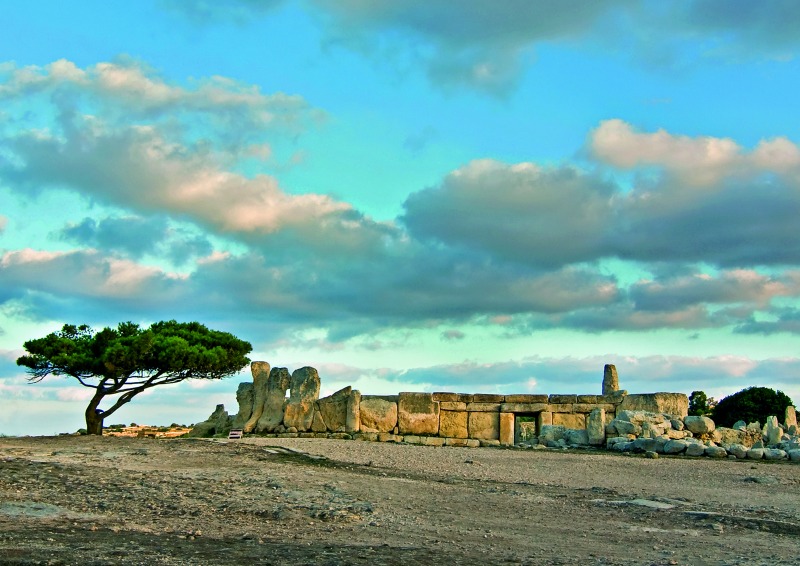
The megalithic structures at Hagar Qim © viewingmalta.com
It’s really old
Malta has a history stretching back well over 6000 years. Ħaġar Qim (the ” Worshipping Stones”) like Stonehenge is an example of ancient megalithic architecture; its massive stones lining up with the sun in the summer and winter equinoxes. The Hypogeum of Ħal-Saflieni (or just Hypogeum) is an underground temple complex with the earliest remains dating to 4500 BCE. It is an important historical site and to help with conservation efforts; admission is limited. It is advised to book your tickets several weeks in advance to make sure you get a spot. On Gozo, the Cittadella has recently been restored. The fortifications have stood in one form or another since the Bronze Age, repelling invaders. If you are interested in medieval history, Malta was the home of the Knights Hospitaller, and their mark is felt all over the island.
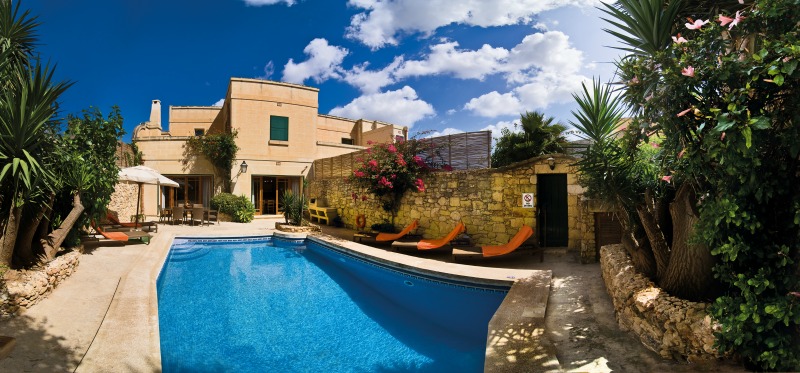
The farmhouses I grew up with Saskatchewan never looked like this! © viewingmalta.com
credit: Baron Group Farmhouses
You can stay in a luxurious farmhouse…
Or at a 5-star resort or a smaller hotel, or even go camping. The capital Valletta is an excellent base for a city break and for ease of getting around the island, or you might want to stay by the beach in Mellieha, which is set up nicely for families. The party hub is Paceville (pronounced “Pach-a-ville,) but if you aren’t big on going hard all night with the club kids, you might want to investigate nearby St. Julian’s or Sliema, which are quieter but still offer lots of tourist services. The island of Gozo is more rural if you are seeking a peaceful respite, and there is a hotel on tiny Comino if you are really looking for solitude.
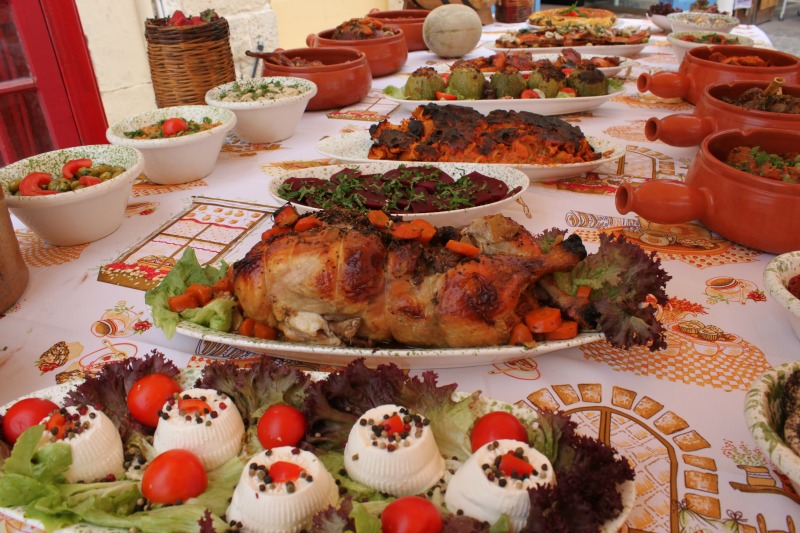
You’re going to want to eat all the food. Seriously. All of it. © viewingmalta.com
Eat ALL the food:
Whenever my father-in-law comes for a visit, I beg him to fill his carry on with pastizzi, flaky pastries filled with either salty irikkota cheese or curried peas and beef. I promise you will become addicted. You will find the national snack pretty much everywhere; my in-laws recommend The Crystal Palace (also called Serkin) in Rabat. In Valletta, you can sample traditional Maltese food at Ta Nenu, or in St. Julian’s Gozitan Restaurant and Gululu Restaurant are worth a visit. The picturesque fishing village of Marsaxlokk is known for its fresh seafood, and the inside the walls of Mdina you’ll find many lovely spots to enjoy the car-free “silent city.”
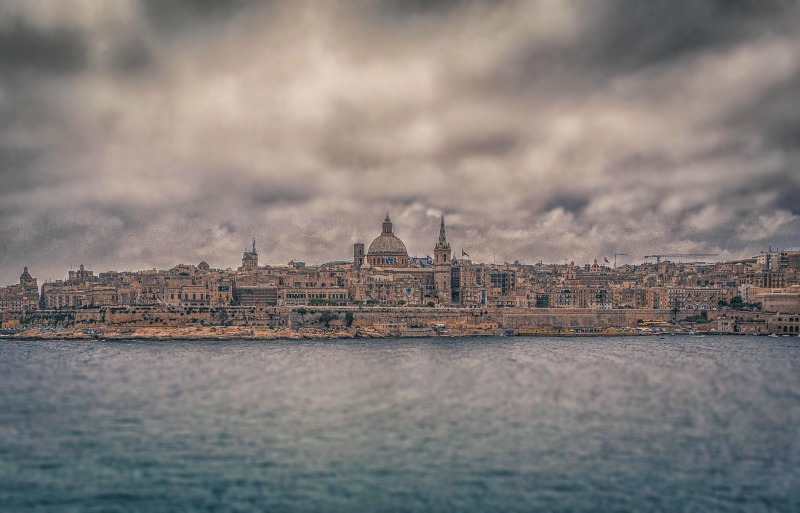
The fortified capital city of Valletta © viewingmalta.com credit: Gregory Iron
2018 is a great year to visit!
The capital city Valletta is a European Cultural Capital for 2018. That means there are tons of artful events happening throughout the year. The entrance to the city has been revamped and is, in the words of my cousin-in-law, “magnificent.” Valletta has always been a cultural hot spot, even without the recognition from the European Union. Make sure you make time to visit the imposing Baroque St. John’s Co-Cathedral, resplendent in rich gifts of art from knightly patrons, take some pictures at the Upper Barrakka Gardens, and take a crash course in all things Malta at The Malta Experience.
The Nuts and Bolts
You’ll be very welcome! Canadians can stay in Malta for up to 90 days without a visa. Upon entry in the country, you will need to show your proof of onward travel (like a plane ticket home.) Malta is part of the European Union, so if you have that lovely red passport entry is far less restricted.
Getting there: There are no direct flights from Canada to Malta’s only international airport at Luqa, but there are several flights daily from most European gateways. Malta is a favourite vacation spot for people from the UK, and as such pretty much every major and regional UK airport has a direct flight to Malta.
Getting around: Car rentals will run you between €16 – €28 a day. The rental vehicles are good condition, but the roads are not always. Officially they drive on the left (like in the UK), but in practice, you may find they use the shady side of the road. As my husband’s uncle put it, “Canadians have to get used to driving on the left (and watch out for the other guys)”! If that sounds like more than you want to undertake, taxis and ferries are readily available, and buses are a good option too. Valletta is the central hub and transfer point for coaches all over the island. They are inexpensive but do not run late and take a bit of the flexibility out of your schedule.
And most importantly…
You won’t want to leave! Another cousin wrote to me: “The list is endless….they would need at least three months to visit it all!” To help plan your trip, both the Visit Malta and Air Malta websites are a great resource.



